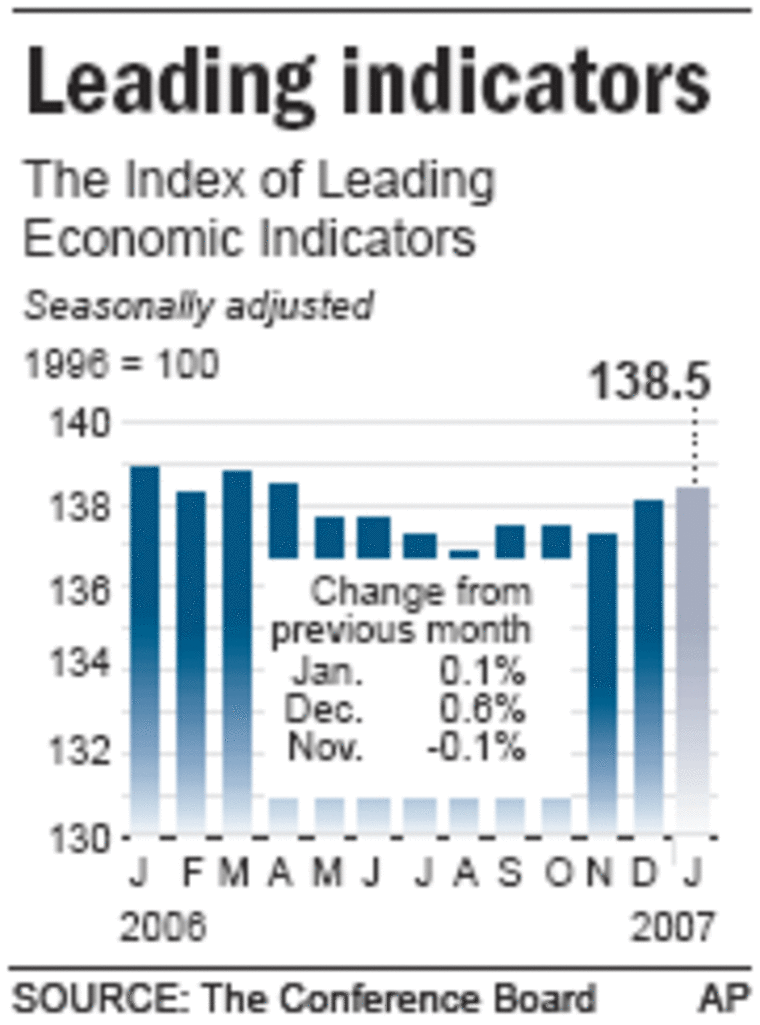The U.S. economy is likely to grow modestly in the coming months despite the slump in housing and autos, a gauge of future economic activity showed on Tuesday.
The Conference Board said its index of leading economic indicators — designed to forecast economic activity over the next three to six months — rose 0.1 percent last month.
The reading was below the revised 0.6 reading from December and lower than the 0.2 percent rise economists were expecting. The index stood at 138.5 versus a revised 138.3 in December.
It tracks 10 economic indicators including building permits, money supply and consumer confidence. Four of those readings rose in January: real money supply, consumer expectations, weekly unemployment claims and stock prices.
“We are still at a good pace of economic growth and we expect more of the same in the second quarter,” said Ken Goldstein, labor economist at the Conference Board. “That speaks to a real deep resiliency to the economy given the slump in housing and manufacturing.”
Those two factors were the biggest negative contributors to the index.
“The weakest part in the last months has been the industrial core,” Goldstein said. “That hasn’t changed — it hasn’t gotten worse, but it’s not getting better either.”
The yearlong decline in the housing market showed few signs of easing in January, as applications for new building permits fell for the 11th month out of the past 12 and new housing construction fell to its lowest level in nearly 10 years last month.

Still, economists said the Conference Board reading reinforced that the housing slump is not hitting other parts of the economy too hard.
“The reading is consistent with an overall soft landing, which is exactly where the Fed wants us to be,” said Mark Vitner, senior economist with Wachovia Corp.
The Federal Reserve uses monetary policy to target economic growth at a pace that does not cause inflation. Last week Fed Chairman Ben Bernanke said growth and inflation were moderating.
Investors got another data point Wednesday when the Labor Department said the consumer prices for January rose by a higher-than-expected 0.2 percent.
“Inflation was higher than expected, but the three-month rate shows it’s moderating,” Vitner said.
Falling energy prices only partially offset big increases in the cost of medical care, food and airline tickets. The consumer price index is one of the primary indicators the Fed uses to gauge the pace of inflation.
Retail sales were essentially flat in January, the poorest performance in three months. On Tuesday, Wal-Mart Stores Inc., the nation’s largest retailer, said U.S. sales at its namesake division were modest, and Home Depot Inc., the nation’s biggest home-improvement retailer, reported a sharp drop in sales, indicating the housing slump is crimping consumer spending, at least for home-improvement items.
Consumer spending is closely watched because it accounts for two-thirds of total economic activity.
The Conference Board’s coincident index, which measures current economic activity, rose 0.1 percent in December to 123.3, following a similar gain in December.